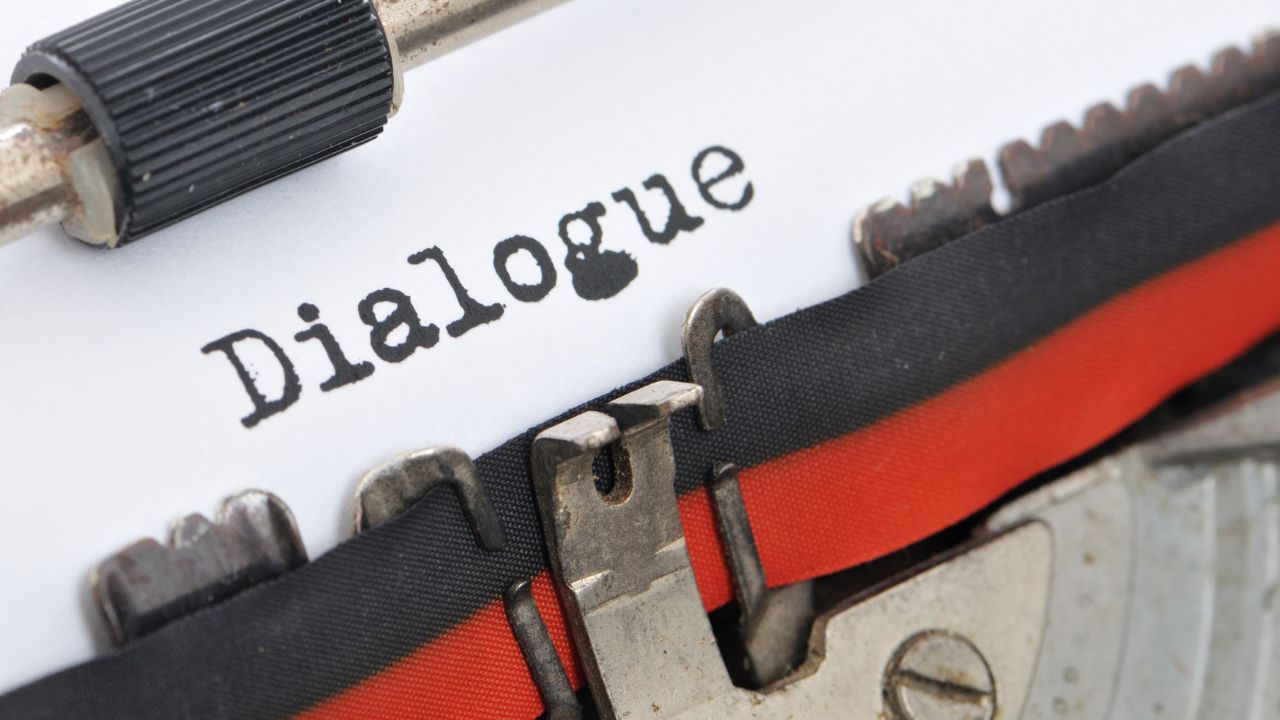
Bringing Characters to Life Through Dialogue
Storytelling thrives on connection, and few elements bring characters to life as effectively as dialogue. Understanding how to make your storytelling more engaging with dialogues can elevate your writing by making characters feel authentic and scenes more immersive. Whether you’re writing fiction, screenplays, or even memoirs, the way characters speak can shape the reader’s perception and deepen their emotional engagement. Well-crafted dialogue pulls readers into a scene, making them feel like they are part of the conversation rather than just observing from the outside.
Poorly executed dialogue, however, can break immersion and weaken a story’s impact. Stilted exchanges, excessive exposition, or unrealistic speech patterns can make characters feel flat and unconvincing. By understanding how to craft natural, purposeful dialogue, writers can create compelling narratives that feel authentic and engaging.
This article delves into how effective dialogue enhances storytelling. It covers the role of realistic speech, techniques to avoid common mistakes, and how to use conversations to build tension and move the story forward. By mastering these techniques, writers can create immersive narratives that resonate with their audience.
The Role of Dialogue in Storytelling
Dialogue is more than just an exchange of words between characters. It serves as a storytelling tool that reveals emotions, builds tension, and advances the plot. Understanding how to make your storytelling more engaging with dialogues means using conversations not just as filler, but as a way to deepen character development and immerse readers in the narrative. Well-written conversations help readers understand character dynamics without the need for lengthy descriptions.
In many cases, dialogue can replace exposition by showing rather than telling. Instead of explaining that a character is angry, a sharp remark or clipped sentence can make that clear. Dialogue also reveals relationships, whether through playful banter, intense confrontations, or heartfelt confessions. These moments make characters feel real and their interactions believable.
The strongest dialogues feel organic while still carrying purpose. Every spoken line should contribute something—whether it’s pushing the story forward, exposing underlying conflict, or developing a character’s personality. Idle conversation without direction risks losing the reader’s attention.
Crafting Authentic and Natural-Sounding Dialogue
Realism in dialogue doesn’t mean transcribing real speech word for word. Everyday conversations are often filled with pauses, filler words, and unfinished sentences that wouldn’t translate well onto the page. Instead, natural-sounding dialogue captures the rhythm and flow of human speech without unnecessary clutter, and learning how to make your storytelling more engaging with dialogues can help writers strike that balance effectively.
One technique is to ensure that each character has a distinct voice. No two people speak exactly the same way, and this should reflect in writing. Some characters may use short, direct sentences, while others ramble or speak in metaphors. Personal speech patterns help distinguish individuals and make dialogue feel unique.
Reading dialogue aloud is a useful method to test authenticity. If a sentence sounds awkward or forced when spoken, it likely needs revision. Smooth, natural dialogue reads effortlessly and avoids feeling scripted.
Avoiding Common Dialogue Mistakes
One of the biggest pitfalls in writing dialogue is over-explaining through speech. Characters shouldn’t state the obvious or repeat information that the reader already knows. Conversations should feel natural, not like an exposition dump.
Another mistake is excessive use of dialogue tags. While tags like “he said” or “she asked” clarify speakers, overuse can distract from the conversation itself. Simple and unobtrusive tags work best, and in some cases, body language or actions can replace them entirely.
Forced dialects or unnatural slang should also be approached with caution. While it’s tempting to make speech sound more “authentic” through heavy accents or exaggerated slang, this can often be distracting and difficult to read. Subtle hints of speech patterns are more effective than over-the-top phonetic spellings.
Using Subtext to Add Depth to Conversations
Subtext plays a powerful role in dialogue, allowing characters to say one thing while meaning something else. In real life, people often speak in coded language, leaving certain thoughts unsaid. A character may express frustration through sarcasm or hide their feelings behind casual remarks.
This technique adds layers to interactions, making them more engaging. Instead of a character saying, “I’m jealous,” they might say, “Must be nice getting all the attention.” This approach forces readers to read between the lines, making the exchange feel more dynamic.
Tension thrives on what isn’t said. In dramatic moments, silence or brief, clipped responses can speak louder than long monologues. Mastering subtext makes dialogue more compelling and adds emotional weight to every conversation.
Balancing Dialogue With Action and Description
A conversation on its own can feel flat if it lacks movement or atmosphere. To create a well-rounded scene, dialogue should be balanced with action and description.
Small physical cues—like a character shifting their weight, tapping their fingers, or avoiding eye contact—add nuance to speech. These details reveal emotions and make conversations more immersive. A tense argument carries more weight if the characters pace, clench their fists, or glance at the exit.
Additionally, setting details help ground dialogue in a specific place. A whispered conversation in a crowded café will have a different tone than one held in a quiet, empty room. Blending dialogue with action and sensory details makes scenes richer and more visually engaging.
Using Dialogue to Build Conflict and Tension
Conflict drives stories forward, and dialogue is one of the best ways to create tension. Whether through disagreements, power struggles, or subtle manipulation, verbal exchanges shape the dynamics between characters.
Sharp, quick dialogue increases intensity, especially in arguments or high-stress situations. Interruptions, unfinished sentences, and escalating frustration reflect real-life conflicts. Slower, drawn-out exchanges, on the other hand, can create an underlying sense of unease.
Dialogue isn’t just about what characters say—it’s also about what they avoid saying. Holding back information, dodging direct answers, or responding with questions instead of statements can add layers of intrigue. The best conflict-filled conversations leave readers wanting to know what happens next.
The Impact of Word Choice in Dialogue
The words characters use shape their personalities and relationships. A professor and a street vendor won’t speak the same way, and neither will a teenager and a politician. Understanding speech patterns, vocabulary, and tone helps make dialogue feel authentic.
Short, simple sentences often indicate confidence or authority, while longer, rambling ones may suggest nervousness or indecision. A character who always uses formal speech may come across as distant, while one who relies on casual slang feels more relaxed.
Choosing the right words enhances believability. A few well-placed phrases can reveal backstory, cultural influences, or emotional states without requiring lengthy exposition. The strongest dialogue feels specific to the character delivering it.
Strengthening Emotional Impact Through Conversations
Some of the most memorable moments in storytelling come from dialogue that strikes an emotional chord. Whether it’s a heart-wrenching farewell, a long-awaited confession, or an unexpected betrayal, words carry weight when used effectively.
Pauses, hesitations, and unfinished thoughts reflect real-life emotions. A character struggling to express their feelings might take longer to get their words out or change subjects midway. The rhythm of speech plays a role in conveying mood.
Emotional impact is strongest when dialogue is paired with meaningful actions. A whispered apology after a long silence or a single-word response during a heated argument can be more powerful than an elaborate speech. The right words, used at the right time, leave a lasting impression.
Crafting Dialogue That Leaves a Lasting Impression
Writing engaging dialogue requires balancing realism with storytelling needs. Conversations should sound natural while serving a clear purpose, whether it’s building relationships, advancing the plot, or adding tension. Learning how to make your storytelling more engaging with dialogues can help writers refine these elements so every exchange feels authentic and purposeful.
By giving each character a distinct voice, avoiding common pitfalls, and using subtext effectively, writers can create compelling interactions that keep readers invested. Dialogue isn’t just words on a page—it’s the heartbeat of a story, shaping how characters connect and how emotions unfold.

